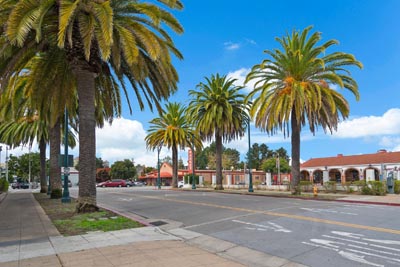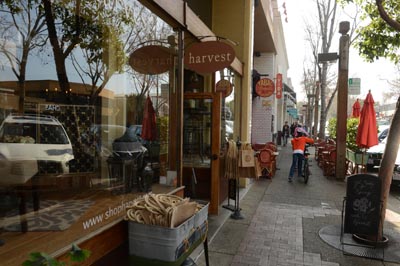Pacific Union Quarterly Report: Q4 2017
All Northern California regions in which Pacific Union operates posted annual median sales price growth in the fourth quarter of 2017. Our Silicon Valley region saw the highest appreciation, at 23 percent, while Contra Costa County, the East Bay, Marin County, San Francisco single-family homes, Sonoma County, and Lake Tahoe condominiums put up double-digit percent year-over-year price gains.
Below, Pacific Union Chief Economist Selma Hepp offers a brief synopsis of fourth-quarter real estate activity in each of Pacific Union’s regions. The accompanying links lead to the full report for each area, where you can access the latest regional and community-specific market data and statistics to help you make a better, more informed homebuying or selling decision.
Contra Costa County
Contra Costa County market activity generally improved from the previous year in 2017, and the fourth quarter was boosted by stronger October sales. However, while sales of homes priced at less than $1 million struggled due to falling inventory levels, sales of higher-priced homes recovered in 2017 and ended the year with 20 percent-plus more activity compared with the fourth quarter of last year. Improved sales activity came amid overall lower inventory, which was 13 percent below last year’s fourth quarter — especially for more affordable homes. Tight inventory conditions and intensified buyer competition continued to push up the median sales price.
However, despite more sales activity for higher-priced homes, buyers remained cautious and reluctant to enter bidding wars. Price reductions were more common for homes priced between $2 million and $3 million than during the same period last year. Contra Costa County buyers generally still seek affordable homes, and such properties saw increased competition and more bidding wars than higher-priced homes.
Looking Forward: Relatively higher levels of affordable homes for sale in the region may boost the local market amid tax-reform changes and incentives for buyers to mortgage loans below $750,000. Also, the Bay Area’s continued strong economic fundamentals will ensure that there are plenty of buyers and that activity remains strong in 2018.
Click here to read the full Q4 2017 Contra Costa County real estate report.
East Bay
The final quarter of 2017 in the East Bay housing market maintained trends seen throughout the year and finished on a strong note, with 6 percent more home sales than recorded during the same period last year. With a 12 percent year-over-year increase in sales, October was a particularly busy month, with the East Bay leading the Bay Area for sales activity.
Inventory levels remained tight, leaving buyers with very few options — particularly at more affordable segments of the market. Heightened demand amid such conditions caused East Bay prices to rise by about 10 percent.
Activity for higher-priced homes also ended 2017 on a strong note, with demand solidly outpacing 2016’s fourth quarter. Sales were notably stronger for homes priced between $1 million and $3 million, and buyer competition was higher at all price segments, with more homes selling over the asking price when compared with last year. Buyers paid an average of 16 percent more than list price, a slight increase from last year.
Looking Forward: Access to transit and jobs and relative affordability will continue to propel demand for homes in the East Bay, especially given the tax-reform policy, which along with strong economic fundamentals may lead more buyers to shop for lower-priced homes.
Click here to read the full Q4 2017 East Bay real estate report.
Marin County
While fourth-quarter Marin County home sales increased compared with the same period in 2016, the Wine Country wildfires boosted stronger-than-usual November sales. Fourth-quarter activity increased by 4 percent year over year, with a notable gain in sales of homes priced between $2 million and $5 million. Sales of homes priced above $5 million slowed some toward the end of the quarter.
Marin County inventory consistently declined throughout 2017 and ended the fourth quarter 6 percent lower on an annual basis, with the most severe drop in affordable homes. Heightened demand — along with tighter supply conditions — pushed median homes prices up by double-digit percentage points on an annual basis, especially in the last two months of the year. Buyer competition led to more bidding wars than during the same period last year, and more homes sold over the asking price. While market activity for more expensive homes improved from 2016, affordable homes remained in high demand, especially given the influx of families who were impacted by October’s wildfires.
Looking Forward: Post-fire demand from buyers will continue to drive housing market activity in Marin County in the first quarter of 2018, though falling inventory will restrict any significant pickup in market activity. Affordable homes will likely see more activity than higher-priced homes.
Click here to read the full Q4 2017 Marin County real estate report.
Mid-Peninsula
A severe lack of homes for sale was the main theme of Mid-Peninsula housing markets in the last quarter of 2017, as well as throughout the entire year. In the fourth quarter, there was less than a one-month supply of homes on the market; in other words, at the current pace of sales, all available inventory would sell out in less than 30 days.
At the same time, buyer demand persisted, leading to significant competition in the market, especially when compared with the fourth quarter of 2016. Buyers increasingly faced multiple offers and paid above asking price nearly 80 percent of the time. Buyers also paid higher premiums than they did in the fourth quarter of last year, an average of nearly 10 percent.
As a result of these competitive forces, the region continues to see some of the strongest increases in median prices across the Bay Area, with overall 2017 appreciation at 14 percent year over year.
Looking Forward: While concerns over the impacts of the tax reform loom over the future of the region, continued economic strength and solid employment should ensure that demand remains strong for Mid-Peninsula homes in the coming quarters. A lack of supply is potential buyers’ biggest obstacle.
Click here to read the full Q4 2017 Mid-Peninsula real estate report.
Napa County
Napa County real estate activity in the fourth quarter maintained the slower momentum it saw throughout 2017, though December sales surprised with an uptick in activity. Contrary to stronger 2016 market activity, overall 2017 home sales were down by 6 percent on an annual basis. Nevertheless, homes priced between $1 million and $2 million were in higher demand last year, pushing sales at that price point above 2016 totals.
There were also fewer homes for sale throughout 2017 on an annual basis, though a decrease in higher-end homes on the market in the last quarter reflects typical seasonal patterns. In addition to continually falling inventory levels, post-wildfire market conditions further constrained inventory. Demand for affordable homes continued, especially given the need for families to find places to live while either rebuilding their previous properties or deciding on next steps. Greater demand than the number of homes for sale helped further drive median home prices in the region.
Looking Forward: Typical seasonal conditions, along with post-fire impacts, may hamper home sales in the first quarter. However, demand in the following quarters should pick up, as Napa County’s relative affordability makes it attractive to Bay Area buyers.
Click here to read the full Q4 2017 Napa County real estate report.
San Francisco
Fourth-quarter home sales in San Francisco picked up, bringing activity to a level 5 percent higher than last year’s fourth quarter and overall 2017 activity 2 percent above 2016. Renewed buyer enthusiasm was particularly notable in October and November across all price ranges (with the typical seasonal slowdown in December), but the same dismal for-sale inventory levels that characterized most of 2017 persisted — especially for affordable homes. Buyer sentiment remained strong, and home shoppers faced stiffer competition than during the same period last year, pushing median property prices up solidly.
Condominium sales also outperformed last year’s fourth quarter and throughout 2017, especially for units priced between $2 million and $3 million. Strong buyer demand in the resale condominium market produced solid appreciation, and new condominium prices again likewise saw some upward momentum. As with single-family home inventory, there were fewer new and existing resale condominiums available in the fourth quarter of 2017 than in the last quarter of 2016.
Looking Forward: Strong housing fundamentals and the Bay Area’s economic growth will continue to feed buyer demand. Early year’s homebuyer traffic reports suggest that the first quarter will carry over renewed momentum in San Francisco housing markets despite some trepidation over the impacts of the tax reform.
Click here to read the full Q4 2017 San Francisco single-family homes real estate report.
Click here to read the full Q4 2017 San Francisco condominiums real estate report.
Silicon Valley
Silicon Valley‘s housing market maintained strong momentum throughout 2017 and finished the fourth quarter with the same vigor. Nevertheless, home sales have been constrained by anemic inventory conditions, which have continually declined on a year-over-year basis, for an average monthly decrease of 27 percent. Inventory in Silicon Valley is dropping at the fastest rate in the Bay Area, and as a result, home sales were down by 6 percent from last year’s fourth quarter.
Persistent buyer demand drove median home prices steadily higher, and the region posted annual appreciation of more than 20 percent, with substantial gains in Palo Alto, Los Altos, and Los Altos Hills. December’s year-over-year median price gain was especially strong, as buyers rushed to lock in some housing benefits in advance of tax changes and may have feared more aggressive increases in mortgage interest rates. The combination of strong demand and depleted inventory makes Silicon Valley’s housing market one of the most competitive in the Bay Area, with homes quickly finding a willing buyer.
Looking Forward: A severe shortage of homes for sale will ensure that pressure on home prices persists in the coming quarters, while strong economic fundamentals are expected to help boost homebuyer demand.
Click here to read the full Q4 2017 Silicon Valley real estate report.
Sonoma County
With October’s wildfires in the rearview mirror and rebuilding underway, fourth-quarter housing market activity in Sonoma County did not follow its usual year-end trends. Home sales activity in November and December was notably higher than is seasonally typical, leading overall fourth-quarter activity to increase by 5 percent on an annual basis. All told, 2017 home sales were only slightly higher than the previous year’s activity.
Some constraints resulted from fewer homes on the market, which was the case through most of 2017 and mostly due to the rapidly declining inventory of affordable homes. The supply of homes priced at more than $1 million fared the best, increasing by about 14 percent in the fourth quarter compared with the same period last year. With much of the fire-impacted areas in neighborhoods with higher-priced homes, such inventory will see further constraints over the next year. Also, October’s wildfires resulted in newly listed lots, which jumped by three times in December year over year.
Demand for affordable homes, especially among families displaced by wildfires, led to a strong increase in median prices in the fourth quarter, with the highest gain for homes priced less than $1 million.
Looking Forward: Rebuilding efforts and families making decisions about their future location will characterize the region’s real estate trends in the coming year. However, Sonoma County’s relative affordability will remain a favorable factor that will continue to attract Bay Area buyers and hopefully allow existing households to find a new home. Demand and limited inventory should drive prices by double-digit percentage points.
Click here to read the full Q4 2017 Sonoma County real estate report.
Sonoma Valley
Given October’s wildfires, Sonoma Valley‘s housing market saw notable impacts that led fourth-quarter trends to deviate from their typical path. Activity was significantly stronger, driven by a large jump in sales in the last two months of the year — especially December. Overall, fourth-quarter activity was 19 percent higher than during the same period last year. At the same time, while the quarterly number of sales trended similar to last year, December saw a relatively larger supply decline than is seasonally the case.
However, while strong demand for homes led to more market activity, buyers were somewhat timid and unwilling to engage in bidding wars or pay premiums. Thus, the median price remained relatively steady, with much less growth than seen in Sonoma County in general. Buyers were most interested in affordable homes, which were absorbed at a faster rate than during the fourth quarter of last year. Also, most appreciation occurred for homes priced below $1 million.
Looking Forward: The first quarter will see continued impacts from the October wildfires and likely more home sales activity than is typically the case. As a relatively affordable part of the Bay Area, buyers and families that were recently displaced will look to Sonoma Valley. Sellers may find renewed buyer demand to be a favorable reason to list their homes.
Click here to read the full Q4 2017 Sonoma Valley real estate report.
Lake Tahoe/Truckee
Strong third-quarter home sales activity in the Lake Tahoe/Truckee region spilled into the last quarter of 2017, with 33 percent more transactions than in the fourth quarter of 2016. The increase in home sales was evident across all price ranges. Overall, home sales in 2017 were 7 percent higher than in 2016, and the largest increase was seen among homes priced between $1 million and $2 million.
Strong buyer demand helped deplete the number of homes for sale, cutting the months’ supply of inventory by half. Homes also sold at a faster rate than they did last year. Bay Area households’ wealth gains generally fueled demand and helped push the median home price up solidly, with some segments of the market seeing double-digit percent growth.
Looking Forward: Home sales in the Lake Tahoe area are expected to remain strong in the first quarter. The year 2018 has started off brisk, while would-be skiers have had more time to shop for homes while waiting for snow. As in the Bay Area, there is some uncertainty over the impact of tax-reform changes on demand for second homes. Nevertheless, as almost half of Lake Tahoe are homes purchased with all cash, the impact should be limited.
Click here to read the full Q4 2017 Lake Tahoe/Truckee single-family homes real estate report.
Click here to read the full Q4 2017 Lake Tahoe/Truckee condominiums real estate report.
 TEAM WAKELIN
TEAM WAKELIN